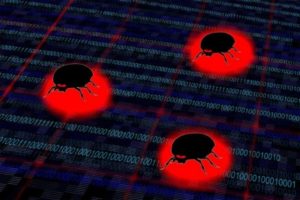Any person who has ever used a computer has probably heard the term “malware.” It is everywhere, and the general consensus is that we have to be careful and protect ourselves from it. But what is the malware definition? What is it and why are people afraid of it?
The first thing you have to know when it comes to malware definition is that it is a software much like any other program on your computer. However, its intention is to inhibit, damage, or disable your computer system without your knowledge. It is a malicious software, hence the term.
Today, malware attacks continue to grow. They have become more frequent, and malware definition has become more sophisticated. Detecting and resolving these issues have become harder and harder as time goes by. With every new defense, there seems to be two new malware out there. And if they get into your system, they will steal proprietary data from your computer, thus causing major damage before they are even detected.
Defending Against Malware Attacks
Now that you know the malware definition, the next step is to protect yourself against it. This is especially true for organizations such as schools and businesses, where sensitive information can be stolen by these programs. So, the first thing to do is educate people in recognizing potential attacks and vulnerabilities. Everyone should follow a proactive approach in defending against these threats.
Security Updates
Everyone should install security updates and patches from known sources immediately as they become available. These updates give your defenses more ways in identifying new malware definition and threats. Updating is particularly important in commonly used programs.
Avoid and Report Suspicious Emails
When receiving emails from unknown sources, do not click on any attachment, file, or link that is in there. They can contain malware. Instead, report this to your IT personnel so they can properly investigate if this is a safe email or if it is an attempted attack.
If you accidentally click on the link or files, immediately report it to your IT or security personnel so they can track, analyze, and attempt to mitigate the attack.
Avoid Suspicious Websites
Websites without security protocols are breeding grounds of malware. Try to avoid these websites as much as possible. Malware definition shows that upon entering such websites, your computer may immediately become infected.
Use Your Firewall
Computer systems today should have firewalls that create a barrier against such threats. Make sure that yours is always turned on so you have a blanket of security.
Use Anti-virus/Anti-malware Programs
If there are malicious programs, there are anti-malicious programs as well. These are designed to identify any and all malware definitions and protect you from them. It scans all your files, especially areas most commonly infected, to detect and resolve them. These programs also help in proactively defending your computer from malicious attacks.
Limit App Privileges
When a malware successfully enters your computer, it requires full access in order to run properly. With that malware definition in mind, what you can do is make use of account controls to limit what programs can do without your permission. This will then notify you whenever any program is attempting to make changes to your computer, and you can stop it right then and there.
By following these simple practices thanks to your knowledge of malware definition, you and your employees can help mitigate the risk of being infected with malware. These should become a habit for everyone, so it is recommended to enforce these practices on every user of the network. Only by creating a layered defense can an organization be safe from cyber attacks.
Related Resources:









